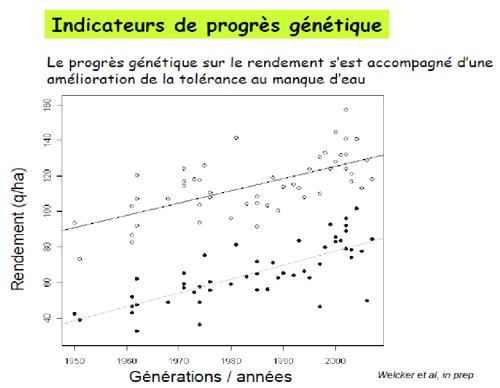Contribution of modern breeding to a durable agriculture
What have maize breeders achieved since 1950 in France ?
- A continuous increase in yield due to genetics, around 0,8 q/ha/year between 1950 and 1980, and 1,2 q/ha/year between 1986 and 2001 (within 1,4 q/ha/year of global agronomic gain in the period)
- A substantial improvement of varieties stability of performance, particularly of their drought tolerance.
- A considerable improvement to their resistance to root and stalk lodging, along with an improvement of their staygreen, or overall plant health.
- An improvement of their disease resistance : smut, helminthosporium, rust, MDMV, MRDV, fusarium ear rot.
- An increase of cultivated biodiversity (allelic richness) when evolving to hybrids (+10% according to an INRA-GEVES survey) and then a quantitative maintainance of this biodiversity with a qualitative renewal (new alleles).
Genetic gain : Yield and drought tolerance 1952-2007

Othe websites of high quality on this topic :
http://www.maisculturedurable.com/

